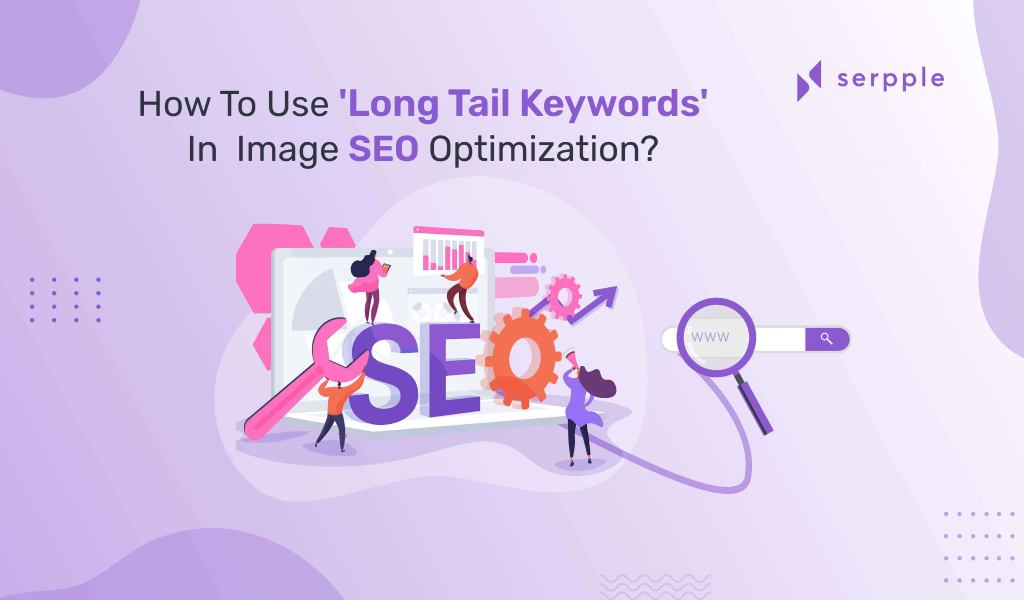
Whether you’re browsing, surfing, reading or writing articles online, chances are you’ll find yourself either searching for articles with images/ infographics or looking for the same to use them in your articles. So, Image optimization plays a prominent role in your site’s SEO. This article explains how to gain an excellent user experience using long tail keywords in image SEO optimization.
Image SEO is the concept of optimizing images to drive more traffic from search engines.
For example, take a look at the following image.
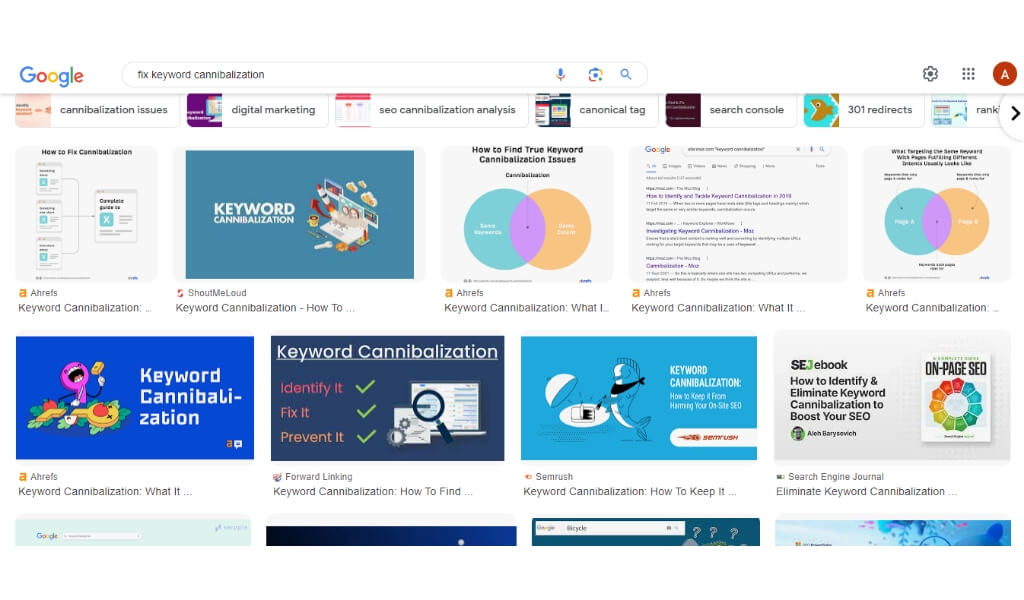
As you can see images ranked on in Google Images for “fix keyword cannibalization”
This proves that by optimizing for image SEO you contribute a lot to rank your site higher on Google Images.
Moreover, this is now a legal requirement in many locations across the globe as image SEO enhances the accessibility of a site. Do you wonder why?
Why is Image SEO Optimization Important?
As per SparkToro statistics Google Image searches accounts for 22.6% of all searches and 92.96% of global traffic is generated from Google Images, and Google Maps.
So, if you choose to not include images in your web content or fail to optimize the images you’ll be missing out on a huge amount of traffic if you don’t.
As image SEO optimization can drive significant traffic to your site. Remember the 2 golden rules and pay enough attention to the process.
1. Your chances of ranking on google increases.
2. Failing to optimize is like skipping an important part of on-page SEO.
You would for sure come across images in the regular search results, often above the usual organic results.
Like the results for the keyword “blue phone luxury cases”
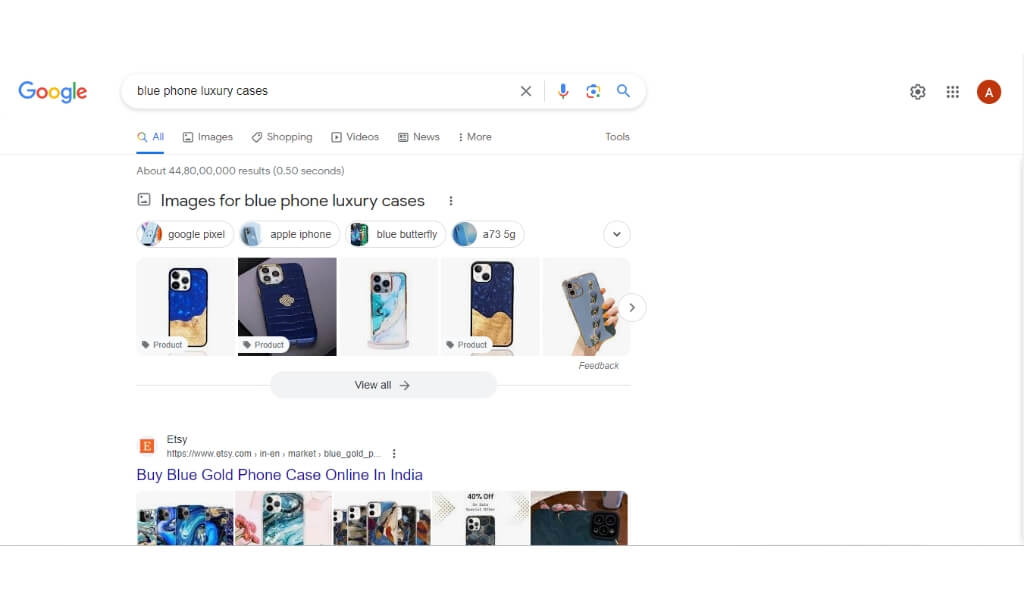
In the image Above— just notice how many images show up before the first search.
Along with accessibility, images like infographics can help users clarify your content to a great extent.
These images take up the role of deconstructing large blocks of your text and making it easily understandable by readers.
So, using images for your web content is something you shouldn’t skip.so is the process of optimizing those images used
And this where the need for long tail keywords in image SEO optimization comes into picture.
What Are Long Tail Keywords?
Long tail keywords are lengthy search terms with relatively low search volume and fewer competition.
Yes, low competition means only a few people are after such individual long tail queries. Yet, when you add them together, these long tails actually make up most part of the entire Google search
What are long tail and short tail keywords?
Long tail and short tail keywords in general differ from each other in terms of popularity. Many people are after the short tail keywords whereas a very few look for intend targeted lengthy search phrases.
Moreover they are at times mistaken for the number of words used and how specific they are. It is not so.
Short- and long-tail keywords got their names from their position on the “search demand” curve.
Let us take all search queries that people have looked for in Google for a period of 30 days and sort them by their search volumes, you’ll end up with a similar graph like this
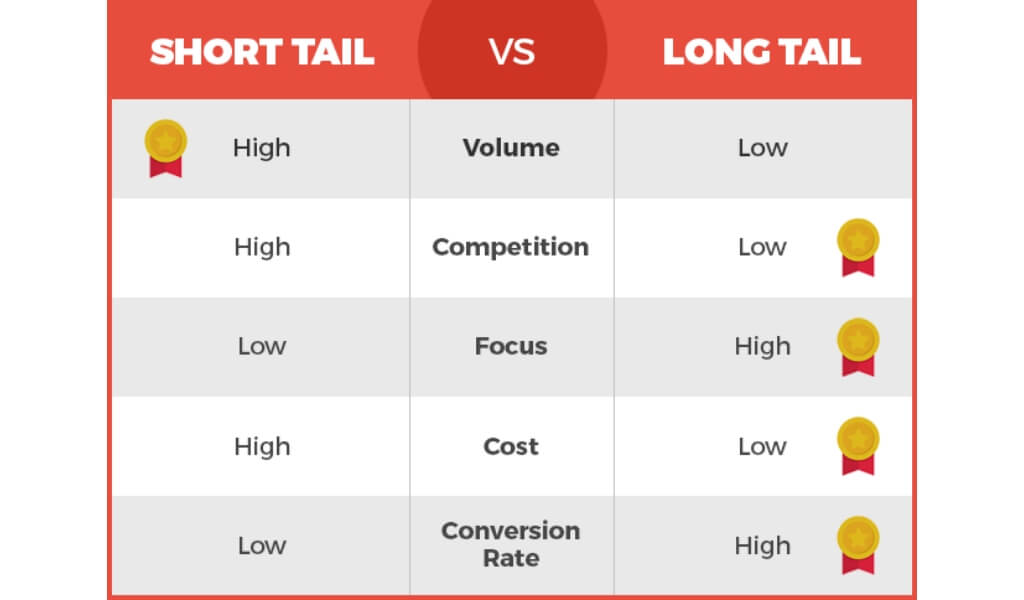
Moreover they are at times mistaken for the number of words used and how specific they are. It is not so.
Short- and long-tail keywords got their names from their position on the “search demand” curve.
Let us take all search queries that people have looked for in Google for a period of 30 days and sort them by their search volumes, you’ll end up with a similar graph like this
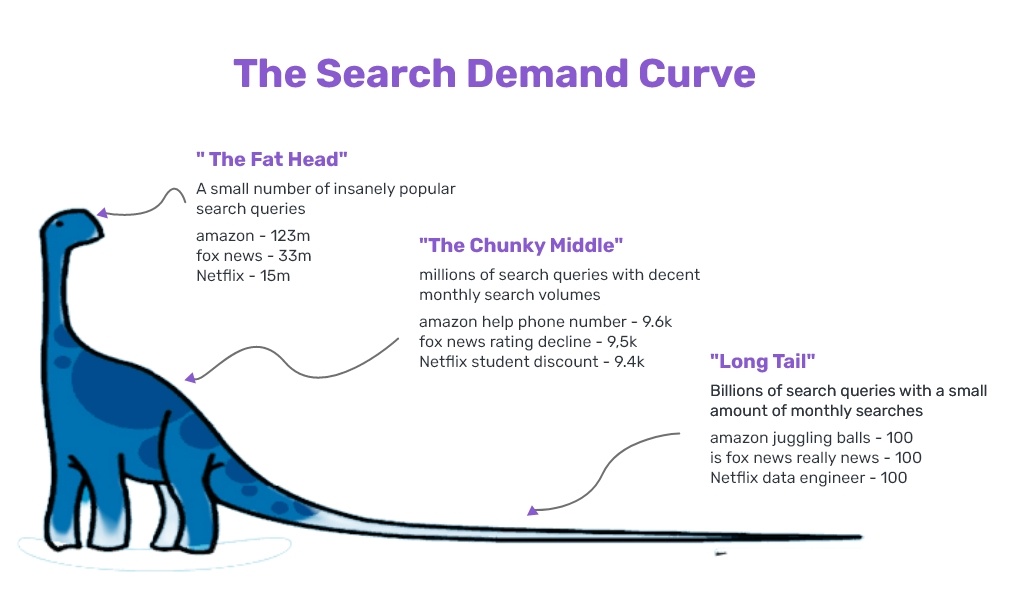
As you see you can quite easily make out that the long-tail keywords take up the part that resembles the long tail in this graph.
This shouldn’t be interpreted that these keywords are worse. They are just less popular. Parallely, the fat head of the curve shows that the short-tail keywords are always preferred by a large population of surfers.
Know more about these long tail keywords in detail:Unleashing the power of Long tail keyword research
Why are Long Tail Keywords Important For SEO?
There are two major reasons to focus on long tail keywords:
Reason#1: Long tail keywords are fairly competitive
In search engine optimization, long tail keywords aren’t as competitive as the short term keywords.
So, getting your content on Google’s page#1 becomes hassle free.
For example, a short tail keyword like “keyword research tool ” is found to have nearly 600k results in Google:
So if you want to rank in the page #1 of Google for that query, you need to outrank at least more than 6 billion other sites.
Now, look at a long tail version of that keyword, “best long tail keyword research tool”.
This same concept goes on with Google Adwords (PPC) too. Long tail comes with the chase of making cheaper bids compared to the cost for bidding on short popular search terms
Reason #2: Long tail keywords have lead to higher conversion rates
Long tail searches are lengthier as well as more specific..
In other words:
To increase your conversion rate it’s always ideal to hook in people using long tail keywords rather than short ones. This is because people who search long term queries make up nearly a decent part of the buyer category..
For example, take a keyword like: “Iphone”.
Someone searching for iphones is probably trying to learn what is the recent model or how much it costs? Which means you can’t say for sure that they are ready to buy anything.
But someone searching for a longer version of that term (like “alternatives for iphone 14 pro Max”) is closer to making a purchase.
Hence proved! The traffic that you get from including long tail terms ends up with expected or at least decent conversion rates.
How to Find Long Tail Keywords
Here are successful ways to identify the long tail keywords you are in need of.
Google “Searches Related to…”
None of us could have missed it while scrolling to the bottom of Google’s search results, the section called, “Searches related to”
Often this little area is considered to be the gold mine for SEOs while performing long tail keyword research.
To make a perfect list of such perfect long tail keywords, pick one of the keywords from the “Searches related to…” area.
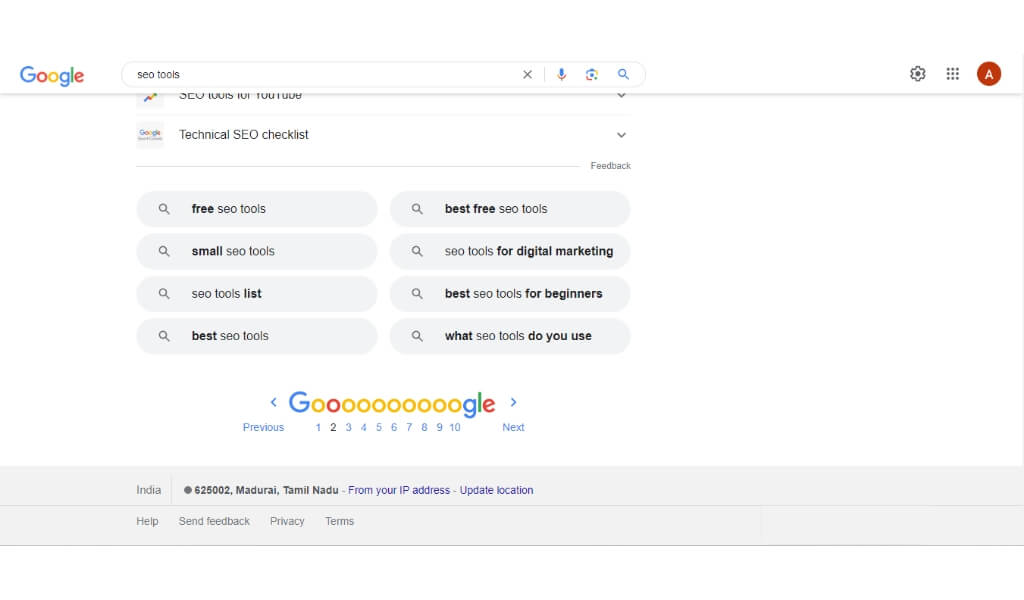
Again type that term into Google search bar then, check out the “Searches related to…” results again.
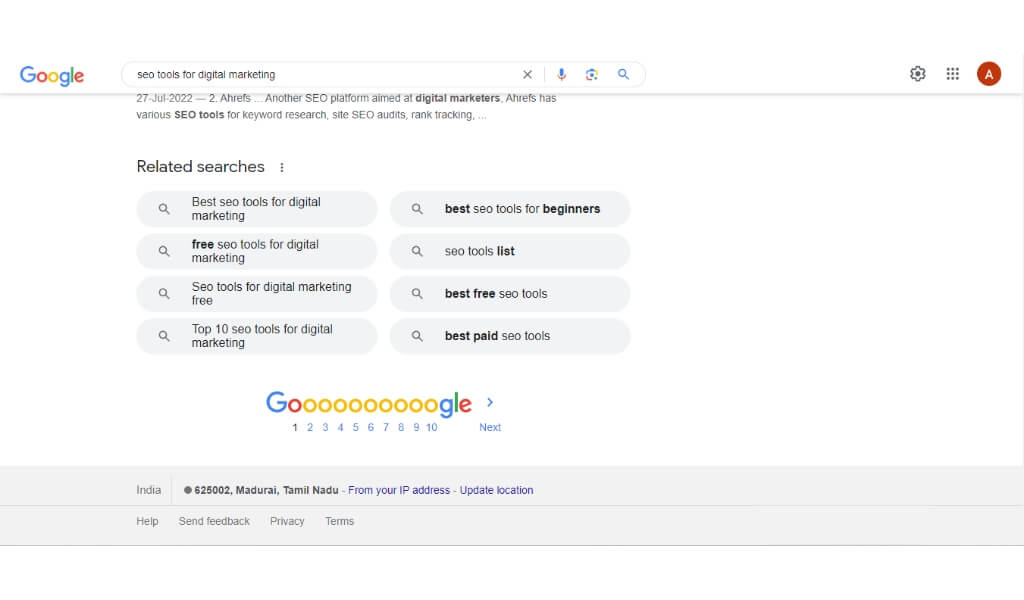
Repeat the same until you end up with a massive list of needed long tail keywords.
Phew!!!! It seems to be time consuming. The most time saving and efficient way to get this done is by using the best tools for long tail keyword research such as,
1. Serpple
Serpple is an advanced Google Rank Tracker with the keyword research module that has a rich keywords database and is sought after by SEOs globally.
The tool is built with a user friendly interface and is perfect for long tail keyword research.
All you need to do is get started with Serpple. And type your keyword in the search bar to explore it further.
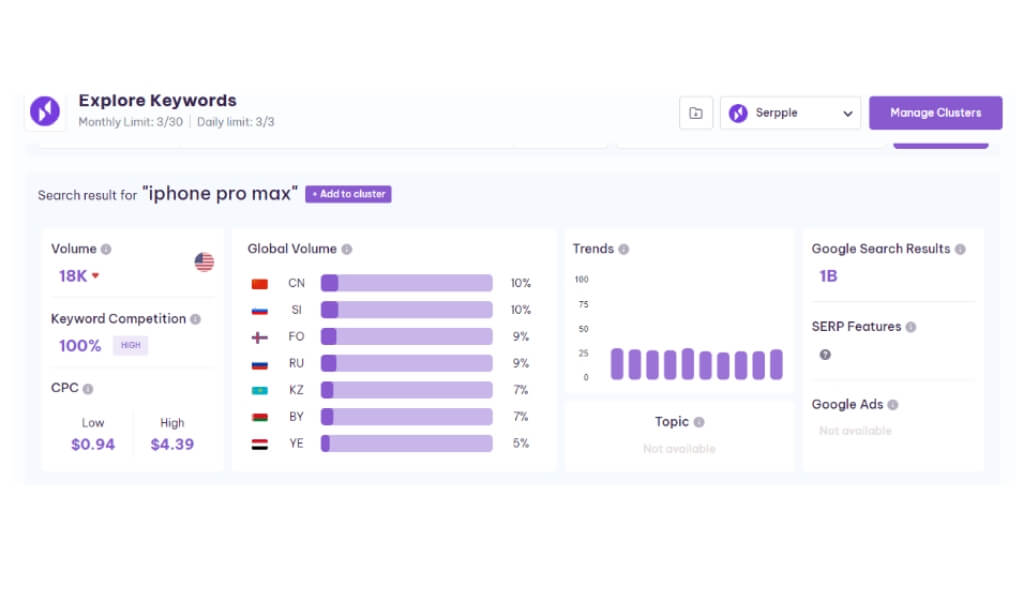
The tool gives you data for the keyword related to its volume, trends, global search volume, PPC, competition level,etc.
Apart from this the tool is much resourceful that it eliminates the need for scrolling down the Google page’s ‘ related search’ section and the ‘Google autocomplete prediction’
It provides data fetched from both the mentioned sections, the valuable assets of Google.
Add the keyword to your cluster and choose another from the list of keywords fetched by the tool and form your cluster keywords for each intent.
2. Answer The Public
Answer The Public is yet another popular keyword research tool that brings up question-oriented keywords.
To use it, type a chosen lengthy keyword into the relevant field and then click on the “Get Questions”:
The tool will then drag out questions that people may inquire of your topic:
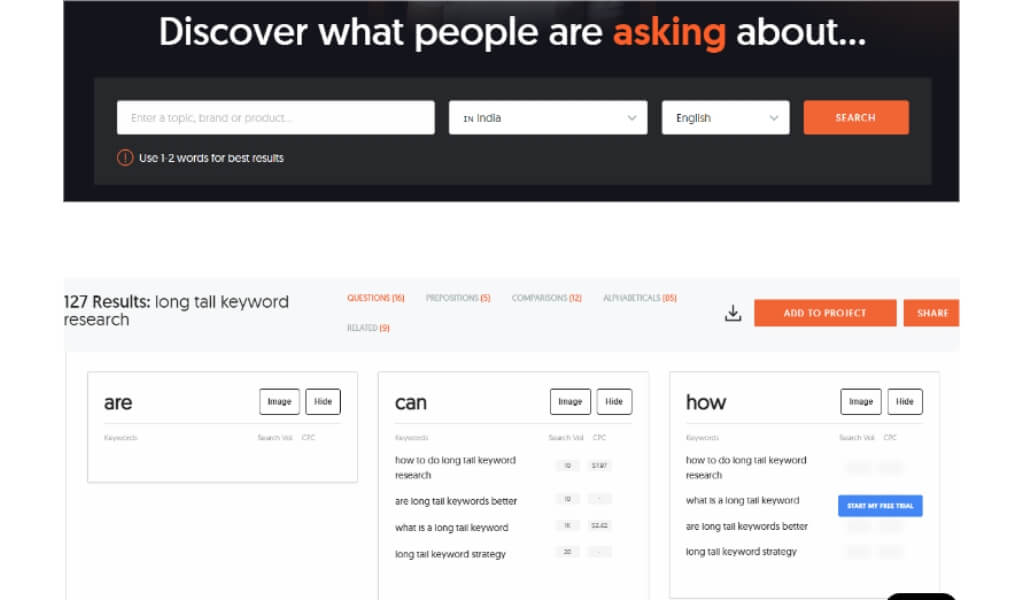
You’ll have a set of question keywords that tend to be long. Yes! The long tail terms you needed the most.
You also organize the data alphabetically:
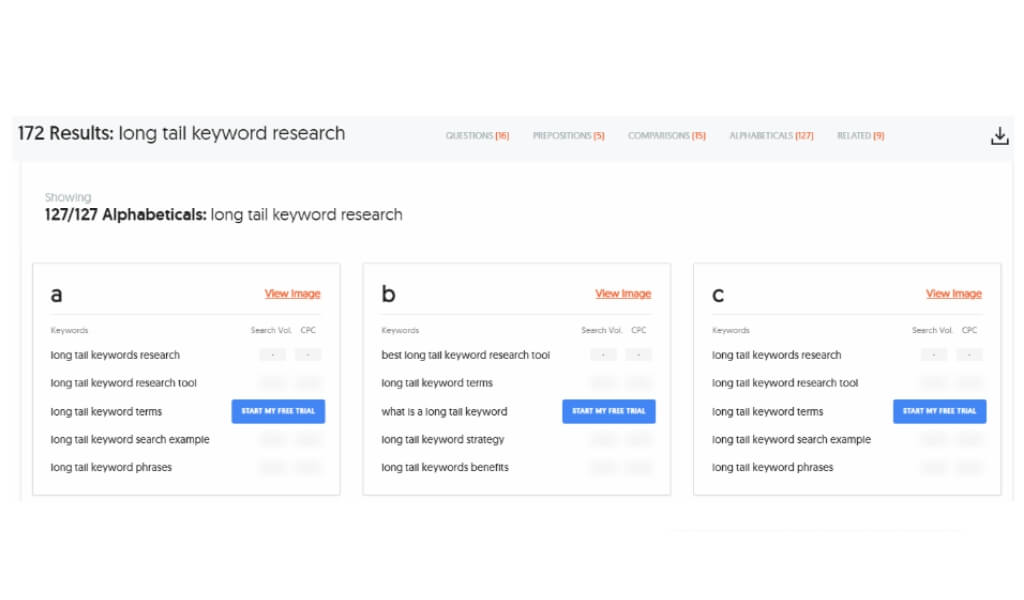
There are more such similar tools, pick the best of long tail keyword research tools available to choose the right keywords to optimize your images.
Proper ways to Add Long Tail Keyword into Images
Google is a master at recognizing what’s in an image. You cannot totally depend on their abilities to rewrite the title tag and descriptions like Google does for meta tags.
Instead you hold the task of providing the context for that image — so optimize it perfectly by filling in the exact and brief description of it.
When your image is ready to use, you can’t just throw it into your article blindly to fill up the spaces. Optimize it by adding relevant descriptions using long tail keywords to the image, making it available for users and Google bots.
Long tail keywords in image SEO optimization can be done well by utilizing the three parts of the image in any web content you create
1. Captions
The image caption is the text that comes along with the image on the page. Let’s take this article. look at the images. The text you find below each one are the captions.
These captions are important for image SEO as people use them while looking for web content. There are 4 main factors people tend to scan even while skimming web pages. They are
- TOC
- Headings,
- Images
- captions
So, does this mean you need to add captions to every image?
Not necessarily, because not all the images serve the purposes, some images are just there for decorative purposes too like a book’s cover. So, always prioritize your users’ needs and don’t caption images just as blind SEO practice.
2. Alt text
The alt text (or alt tag) is added to an image to describe it even if the image can’t be displayed to the user for any unnamed reason.
So, add alt text to images you use including the long tail keywords for that page.
However, same as the caption please see to that not every image needs to have an alt text.
For instance, the top image of this article is purely for decorative reasons. So, the top image neither has a caption nor alt keywords. as having an alt text for our top image doesn’t bring any value to you readers.
3. Title text
Just hover your cursor over any images in this blog. You get a text about the image as a tooltip and that the title text.
Title text and ALt text for most images in Google are similar. This is because a lot of people who use both Alt and title tags simply copy the alt text and use it for the title too. And, the remaining people leave them out altogether.
So, it is better to incorporate much appropriate information in the main content, rather than those bound to the image for satisfactory optimization.
And, how reliable is it?. Does using long tail keywords in image SEO optimization really work?
Case studies: Popular Brands that succeeded using this Tactics
1. Amazon
As per Search Engine Guide Survey Amazon, the top selling shopping store in the world makes 57% of its sales from long-tail keywords.
Take a look at the keyword suggestions for “iPhone pro max”
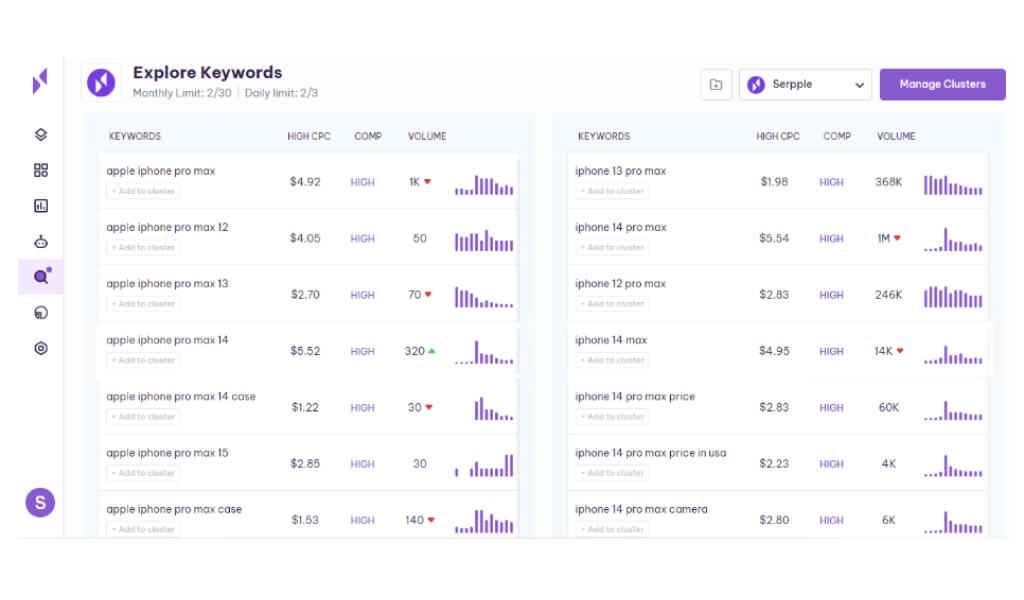
It’s clear that higher search volume, keyword difficulty and competition requires a bit more time span to rank those keywords in the SERP.
Thats where Amazon, it takes their chance and gives a preference to its long-tail keyword searches
There could be no better example of a long-tail keyword containing the product along with its brand name and model than this.
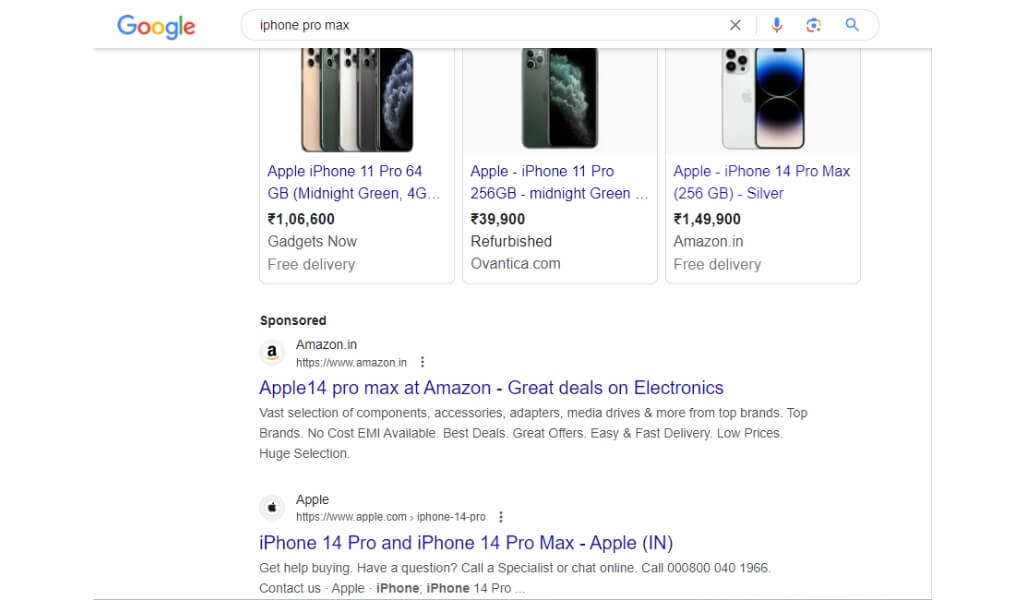
As mentioned earlier in this blog a user who searches with this term is likely to turn into a potential buyer.
2. Hubspot
HubSpot, one of the few most successful inbound marketing companies, is always prioritized by users and analysts as it comes to e-books, infographics, stats & surveys etc.
It’s found that Hubspot has been ranked for more than 500K keywords out of which long-tail keywords play a prominent role.
Therefore employing long tail keywords in image SEO optimization is a proven tactic that for sure will take your images to Position #1 on Google’s Page.
Effect of Using Long tail keywords in image SEO optimization
To get your images ranked on Google images, optimizing those images are essential. This is because the text describing about images hint google bots all about the image and how it’s linked with your web content.
And optimizing the images using long tail keywords makes it understandable even for users to understand like the following example.
This is how an image with a long tail keyword looks when it loads perfectly, when the image gets broken without optimizing, and when image gets broken though it has been optimized
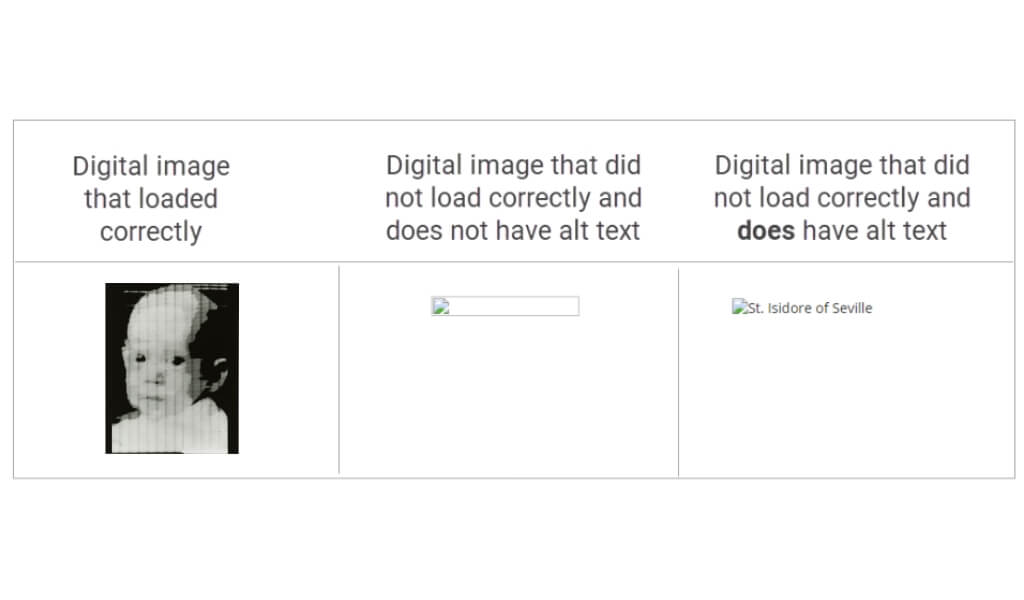
It must be clear that optimizing images doesn’t stop with explaining your content but to the next level it takes up the responsibility of letting your user know about an image even if it’s broken.
Therefore optimizing images with long tail keywords is much needed to help improve your site’s SEO performance by adding further relevancy signals to a webpage.
So, Google could better understand the context of an image and then can determine how to rank the image on SERP.
Always,while optimizing images, it’s best to be descriptive about it than keeping it short.
The best way to master the art is to imagine you’re explaining how an image looks to someone who hasn’t read your content i.e., in detail using lengthy phrases.
Generally, it is ideal to stick to a maximum of 125 characters while writing alt text. This is due to the reason that most screen readers only read up to 125 characters and stop reading alt text after that.
And, to make it even more resourceful you need to add relevant long tail keywords in your description, but never forget the blurry line differentiating your alt text from being specific and being spammy. For better understanding look below,
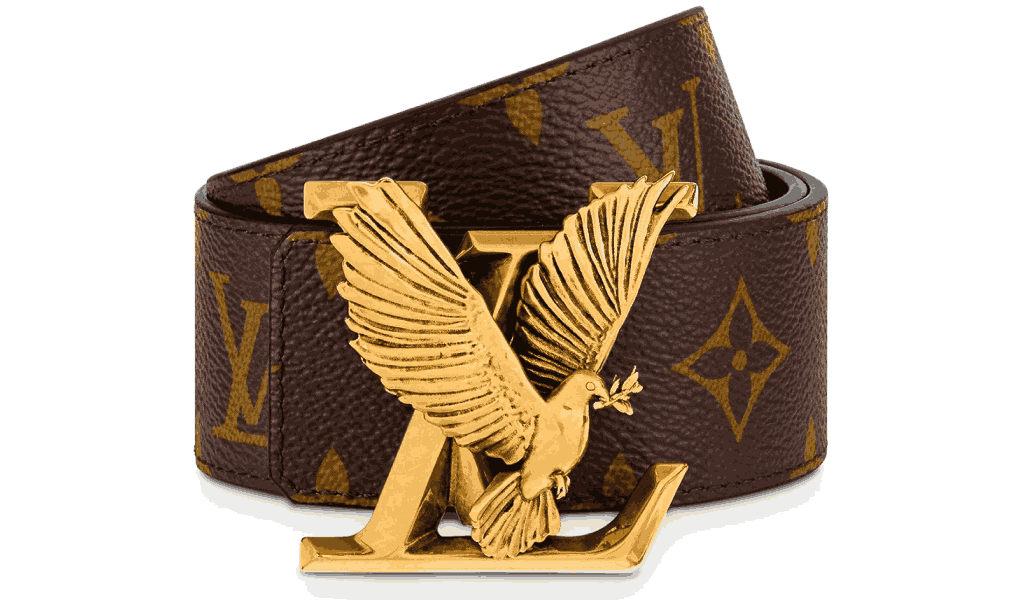
✅ Descriptive: Louis Vuitton Dove 40mm Reversible Belt Released
❌ Spammy: Louis Vuitton Dove Reversible Belt 40mm brown & gray designed by Virgil Abloh
The descriptive example describes the image in a detailed way and it’s quite understandable. It includes a long tail keyword yet it’s still a natural description.
The spammy example risks clarifying the image using multiple related keywords that don’t do much to explain the image.
So, the only safer way to handle this part like a Pro is by including long tail keywords in image SEO optimization.
Let’s take a look at few more examples to make you clear about how using long tail keywords in image SEO optimization look like?
I’ve picked random picks from the web:
Golden Retriever Puppies Sleeping on Each other

Let’s sort the images based on their descriptions are Perfect, Acceptable, Spammy, and Bad
Bad description=”Puppies sleeping”
Spammy description: alt=”sleeping peacefully golden retriever puppies one above the other “
Acceptable description: alt=”golden retriever sleeping pups”
Perfect description: alt=”Golden Retriever Puppies Sleeping on Each other”
As you can see, in each case the best is always that one which seems to have the right long tail keyword, resulting to be the most descriptive without over exaggerating.
So, the right way to optimize your Image SEO successfully to rank on the top on Google SERP is by using proper long tail keywords.
These long tail keywords though have little competition seem to have disadvantages too. It’s better to be aware of those before you consider using them to optimize images.
Major Drawback of adding long tail keywords for Image SEO optimization
The major disadvantage of the long tail keyword is its low search volume.
Having less competition may be comfortable for ranking your image yet it’s a meaningful drawback when it comes to a search term in general.
Give it some thought, if no one is looking for a particular term you’ve chosen to optimize your images for then what’s the point in targeting it?
If no one is looking for it then no one will actually find your image optimized with it.
If you’re pursuing an effective strategy for optimizing your images, you need to bear in mind that someone should look for and make use of your image.
Well, then what is the point of this whole 2500+ word article ?
Tip that works: Long tail keywords in image SEO Optimization
Every challenge in SEO is actually an opportunity in disguise. So, the above stated disadvantage is of course a hidden SEO advantage.
This can be tackled by targeting and picking long tail keywords with less monthly search volume at least 25 – 60 searches per month.
Now, by adding these long tail keywords while optimizing your images will definitely result in ranking your images as well as you’ll also have a small group of people finding it resourceful.
Wrapping Up
Having reached the final part of this article, I hope you will start to take enough time to optimize your site’s images. Long tail keywords are effective in voice search as well as Image SEO optimization.
This is possible as there is low competition, and these long tail keywords in Images will signal the bots about your images helping them rank above your competitors on the SERP.
By doing so you will for sure have a noticeable impact on Image rankings. As every tide has its own ebb the use of long tail keywords in image SEO optimization has its cons.
This can be remedied by looking for a long tail keyword with a decent keyword volume with the help of the best free long tail keyword research tool.
Alongside, it can also improve your user experience and improve your site’s accessibility by letting you arrive at the perfect list of long tail keyword clusters to be employed in your image optimization.
So, trust me with the process and try it out like most popular brands did. And, do share your outcome with us.
Join our Facebook community for more such healthy debates and check out our blogs for even more relevant articles on employing long tail keywords for optimization
Optimizing your images helps to ensure a better user experience and that you meet users’ expectations. SEO – Image optimization will help to ensure that your images rank in image searches on Google, and it will also be beneficial to the overall SEO (search engine optimization) of your website.
The most effective optimization method is image caching. It’s the process of storing image files within a user’s browser cache or on a proxy server for fast and easy access. Browser-side caching reduces application requests and a given page’s download size.
Shivani Suryakandan
Posted on June 5, 2023
Shivani Suryakandan is a published author and now a Content Marketer for Serpple Pvt.Ltd. She is passionate about engaging readers and making them understand complicated concepts through her interactive and innovative content style. Being an ever hungry bookworm she enjoys hooking readers' attention through high-quality content. On weekends you can find her hidden behind the piled up chores or running behind her toddler. To read more of her writings follow her on LinkedIn.



